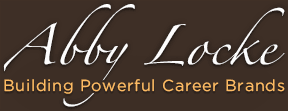
Navigating the Job Market with a Winning Executive Resume: Leveraging the CCAR Model
In today’s fiercely competitive job market, it’s not enough to have a wealth of experience and a list of accomplishments.
You need to make your executive resume stand out in a sea of candidates.
The good news? There’s a proven technique to help you get noticed: the CCAR model.
This powerful tool can transform your resume, showcasing your achievements in a way that captivates employers and highlights your unique value.
What is the CCAR Model?
The CCAR model, which stands for Context, Challenge, Action, and Result, is a structured approach to highlighting your professional experiences.
Let’s dive into each of these elements and how you can use them to create a resume that dazzles.
The Four Elements of CCAR
1. Context
Start by setting the stage. Describe the organization you worked for, including relevant details like its mission and size.
Clearly state your official job title and outline the role you played as this gives the reader a snapshot of your professional environment and your position within it.
*Example: “At XYZ Corporation, a leading provider of innovative tech solutions with over 1,000 employees, I served as the Senior Operations Manager.”*
2. Challenge
Next, identify the challenges you faced. This could be anything from rising operational costs to demands for improved sustainability practices.
The key is to frame these challenges in a way that underscores their significance.
*Example: “The company was grappling with soaring postage costs due to frequent mailings, threatening our budget and operational efficiency.”*
3. Actions
Here, you detail the specific actions you took to address the challenge.
Be precise and thorough, as this part of the model showcases your problem-solving skills and initiative.
*Example: “I spearheaded a project to reorganize our mailing system, qualifying for volume discounts and integrating more efficient processes.”*
4. Results
Finally, highlight the outcomes of your actions.
Use quantifiable data to demonstrate the impact you had on the organization. This is where you really shine.
*Example: “These initiatives resulted in a 20% reduction in mailing costs, saving the company $150,000 annually.”*
Taking Your CCARs from Great to Outstanding
1. Tell a Compelling Story
Your resume should read like a compelling narrative. Test this by reading your stories out loud.
- Are they engaging?
- Do they vividly convey your qualifications and successes?
Use concise, impactful language to keep the reader interested.
2. Develop Multiple Examples
Aim to include more than one CCAR story for each position.
Recruiters are willing to read a slightly longer resume if it demonstrates the qualifications they’re looking for.
3. Include All Relevant Experience
Don’t limit yourself to traditional job roles.
Volunteer work, freelance projects, and self-employment can provide valuable stories that enhance your resume.
4. Use Quantifiable Information
Numbers add credibility.
Calculate the monetary savings you achieved, the percentage increase in sales, or other measurable outcomes.
5. Be Clear and Specific
Avoid vague statements as detailed descriptions are more convincing and give a clearer picture of your contributions.
6. Tailor Content for Target Positions
Customize your CCAR stories to match the specific requirements of each job opening.
Highlight different aspects of your background depending on what the employer is looking for.
7. Stick to Recent and Relevant Info
Generally, focus on the last 10 years of your work history (or 15 for senior-level professionals).
If you need to mention older achievements, do so in your cover letter.
8. Focus Your Job Search
If you’re struggling to come up with relevant CCAR stories for a job, it might be a sign that the position isn’t a good fit for your qualifications.
9. Highlight Awards and Honors
Recognition from others is a strong selling point and include any awards or positive media references to your work.
10. Include Education and Professional Development
Integrate your education, training, and professional development into your CCAR stories.
Show how your learning experiences contributed to your successes.
Adapting the Model
The CCAR model isn’t one-size-fits-all as you need to tailor your executive resume to fit your industry and specific job search goals.
Whether you’re transitioning to a new field or aiming for a higher position within your current industry, this model can help you present your achievements in the best possible light.
By using the CCAR model to structure your executive resume, you can effectively highlight your accomplishments, making your resume stand out to potential employers.
Remember, in a crowded job market, it’s not just about what you’ve done, but how you tell your story.
Make sure your narrative is one that captures attention and conveys the true value you bring to the table.
Results focused Bullet Points / Career Advice / Resume Achievements



